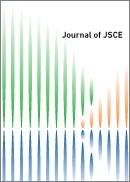The decrease in soil fertility due to natural and anthropogenic factors has reduced crop growth and yield. The use of carbon-rich amendments in soil, such as biochar and plastic char, increases soil fertility, thereby promoting crop growth. This study aimed to evaluate the effects of biochar and plastic char on spinach growth. A pot experiment was conducted in two phases (namely, the first and second experiments). The soil was treated with (1) biochar (B), (2) plastic char (P), and (3) a mixture of B and P (B+P). A total of five treatment rates for each phase (first phase: 1 t/ha, 5 t/ha, 10 t/ha, 15 t/ha, and 20 t/ha, and 2nd phase: 0.2 t/ha, 0.4 t/ha, 0.6 t/ha, 0.8 t/ha, and 1 t/ha) were applied including control. The second experiment was conducted because the first experiment failed to identify the minimum amount required for treatment. In each treatment, the soil pH, electrical conductivity (EC), total organic carbon (TOC), water holding capacity (WHC), and fresh weight biomass (FWB) significantly increased in the treated soil compared with the control. The results indicated that plastic char treatment has a significant effect on the growth of spinach. However, despite performing the two experiments, we still could not determine the minimum amount required for treatment because even the lowest treatment rate increased the soil pH, EC, TOC, WHC, and FWB of spinach. Since the treatment with plastic char alone showed the best outcomes, namely, a twofold increase in crop yield and FWB of spinach, we suggest that plastic char is an effective alternative to biochar as a soil amendment.
View full abstract
